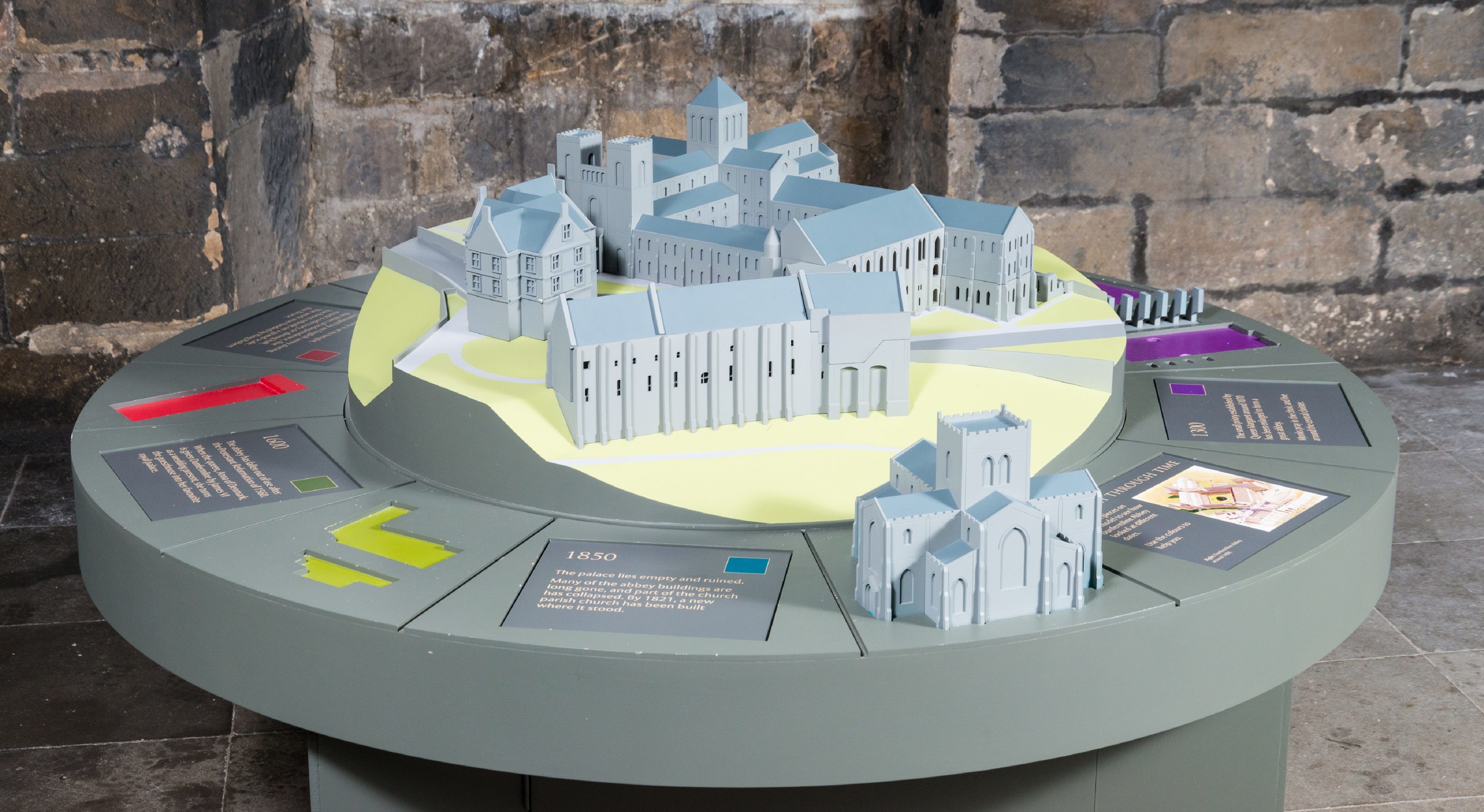Visitors to Dunfermline Abbey and Palace are now able to see how the historic site developed over the centuries.
A new student-designed and built interactive model shows the site at four key periods, spanning 1,000 years of history and its journey from a modest priory to an impressive abbey.
Historic Environment Scotland charged students on The City of Glasgow College’s HND Model Making course to research, develop, design and build a model that would form a new piece of interactive visitor interpretation.
The completion of the unique educational project also helps mark Scotland’s Year of Innovation, Architecture and Design.
Fiona Davidson, learning officer at Historic Environment Scotland, said second year students and their tutors visited the site, which dates back to the 11th century, to discover more about its history and its development, as well as the famous characters throughout Scottish history who helped shape its use and layout changes over the centuries.
“Complete with colour-coded building footprints and movable model structures, this hands-on interpretation offers our visitors a new and exciting way of engaging with the story of this historically significant site,” she commented.
“By recreating its architectural development and layout changes throughout the ages, for themselves, visitors will gain a better understanding of the site and ruinous buildings that surround them today.
“The City of Glasgow College students approached this project with a great level of enthusiasm and impressed us with their detailed proposals and design concepts.
“The result is a great addition to the overall visitor experience at Dunfermline Abbey and Palace.”
The recently installed model shows how the site may have looked in 1300, by which date the small priory established by St Margaret around 1070 had been enlarged by her son, David I, to form a great abbey.
By 1400, the refectory – damaged during the Wars of Independence – had been rebuilt on a grand scale.
The model also shows the site 200 years later, in 1600, by which time the abbey had fallen out of use after the Protestant Reformation of 1560.
James VI had given Dunfermline to his new wife, Anna of Denmark, who remodelled the abbey guesthouse to transform it into her favourite royal palace.
Lastly, it shows how the site looked in 1850, after the medieval church choir had been demolished and a new parish church built on the site.
The City of Glasgow College’s model making course tutor, Simon Atkinson, explained: “Having an opportunity to work with a ‘live’ client is a very important part of The City of Glasgow College HND Model Making course, and the Dunfermline Abbey and Palace model project has been no exception.
“The students were asked to design and build a fully interactive model display which tested their research and design skills and gave them a taste of the challenges associated with a complex professional commission.
“The final result has been a tribute to their creativity and model making abilities which are of immeasurable value as they progress into industry.”










